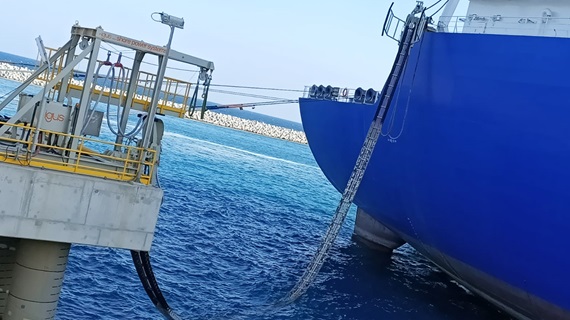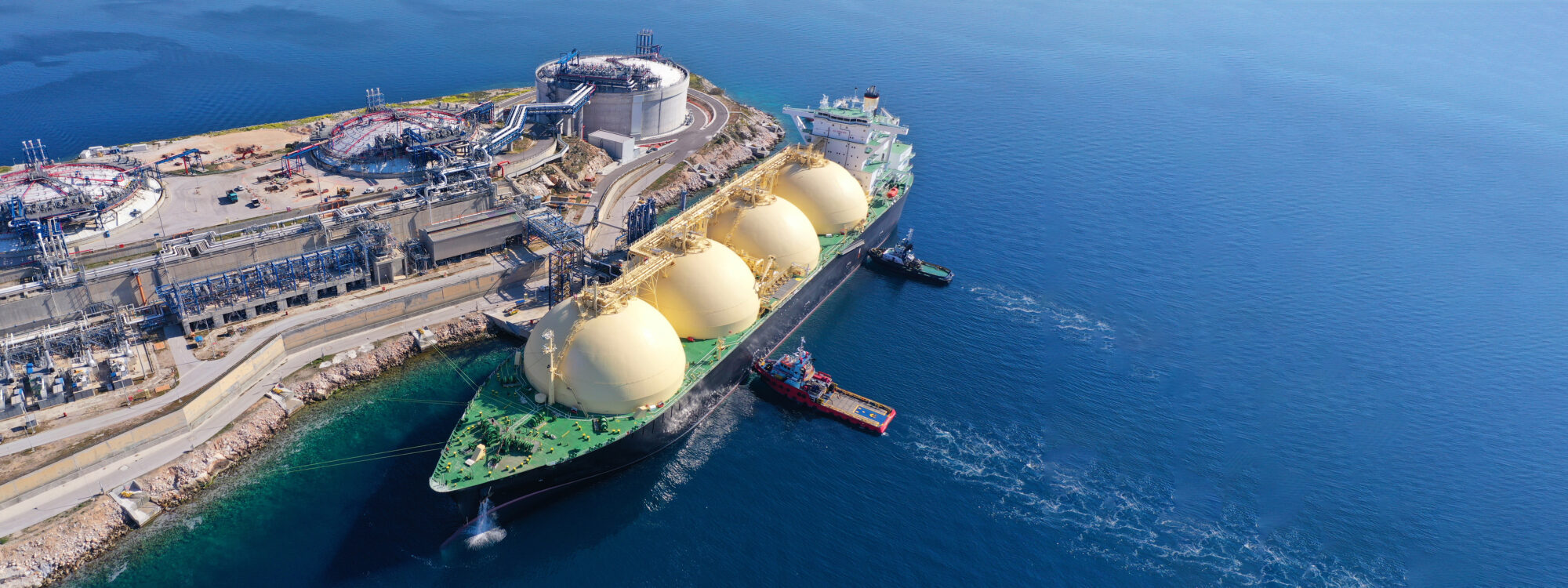Shore Power Cable MGMT System for Floating Storage Unit in Bahrain
Schneider Electric and igus have developed the world’s first shore power supply system for a Floating Storage Unit (FSU) for the new offshore LNG terminal in Bahrain . The core component of the system is a flexible cable feed system that bridges the 30 m distance between the jetty and the FSU.
Characteristics
- What was required: Heavy-duty energy chain for the offshore sector. emergency shutdown system
- Requirements: flexible energy supply because the FSU is often in motion, harsh environmental conditions required an emergency shutdown function for the entire system
- Industry: shipping
- Success for the customer: state-of-the -art energy supply solution, low-maintenance and safe despite difficult environmental conditions

Problem
Liquefied Natural Gas (LNG) is one of the most important energy sources of the present and future as it emits very small amounts of greenhouse gases and is therefore considered an important fossil fuel. In Bahrain, the state authorities have therefore set up a joint venture to plan and build an LNG terminal, which has just gone into operation.
Due to safety regulations, the terminal is located at sea, about three kilometers off the coast. The liquid gas tankers dock at the jetty and discharge the natural gas into a so-called Floating Storage Unit (FSU), a floating storage unit that later pumps the gas to a regasification unit on land via underwater pipelines. Schneider Electric was responsible for the entire energy infrastructure for this project. In order to supply the floating storage unit with power, a connection had to be created between the terminal and the FSU. Here, not only did a distance of more than 30 m have to be bridged, but the movements of the FSU due to loading and unloading, tides, waves and storms also had to be taken into account.
Other criteria were maximum availability and smooth transmission – and without electromagnetic pollution. Most recently, the connection had to be able to be disconnected in a planned manner in the event of an emergency, such as a tsunami, so that the power is immediately and automatically switched off.
“We contributed our know-how in matters of safety and electricity, while igus was able to contribute its experience from challenging cable management projects.”
-Christophe Gaigneux, Shore Connection Consultant at Schneider Electric
Solution
igus recommended using a heavy-duty energy chain, which turned out to be the perfect solution for the application. The offshore energy chain is attached to the anchor post on the jetty side with a swivel bracket and on the side of the FSU with a removable bracket.
The robust and flexible energy chain system guides and protects two medium-voltage cables. The heavy-duty plastic chain convinces with firmly screwed cable routing and internal division, is made of special plastics for extreme applications and all tensile forces are absorbed by the internal cables. The use of this special energy chain allowed a passive design without the need for mechanical elements due to the continuous movement of the FSU. The decisive factor was the controlled bending radius of the energy chain, which protects the cables from over-bending even in a storm. The cables are equipped with special 3-phase medium voltage connectors. But the most important safety element is the emergency shutdown.
Martin Tiling, Industry Manager Shore Power at igus, explains how it works: “In the event of an emergency, we measure the chain length. If the FSU drifts before it is separated from the system, the system will first send out an alarm and then initiate the emergency shutdown. After the When the power supply is switched off, the energy chain’s shore connection point can be pulled out of the special attachment point without the risk of an emerging arc.

